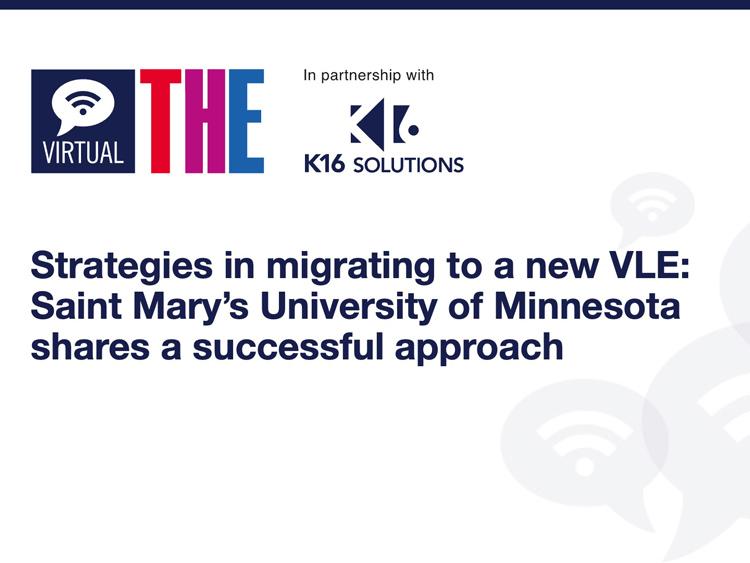Universities do not need to shoulder all the work when migrating to a new virtual learning environment (VLE). This was one of the lessons from a webinar, held by Times Higher Education in partnership with the software company K16 Solutions. During the session, Saint Mary’s University of Minnesota shared its successful approach to VLE migration.
“We didn’t have to do it ourselves,” explained Tianna Johnson, assistant vice-president for information technology at the university. “To be able to share that workload was really key” to sticking to the university’s switchover timeline and maintaining course quality and user experience.
The university partnered with K16 Solutions to migrate existing data to the new VLE platform. K16 Solutions, which specialises in digital migration, has moved more than 1.7 million courses at over 130 institutions, said Steve Mildner, chief operating officer at K16 Solutions. He joked that the company was “agnostic” about technology platforms and could help migrate data from any platform.
In 2019, Saint Mary’s University of Minnesota, which has three physical campuses and an online campus for international students, had two different VLEs, two different video content providers, and two different plagiarism detection systems, explained Abram Hedtke, director of instructional technology at Saint Mary’s. By migrating to a single, new VLE, the university was able to “put our learners first”.
To do that, the university assembled a task force of faculty and staff. “In order to make things better for our students, we really needed to make sure that we were getting feedback from everybody,” said Johnson.
From this feedback, which included tapping into the student network to gauge user sentiment, the university found that the most important factor in a new VLE was that the system had to be user-friendly. Ultimately, it migrated to Canvas, which best suited its requirements.
Once the university had chosen a new VLE, K16 Solutions helped move all of its courses over to the new system. “When you’re trying to move thousands of courses and hundreds of hours of content, it can be really, really tough,” said Hedtke. “You’re navigating multiple batches of courses at different times from different programmes.”
Before beginning the migration process, the university and K16 Solutions agreed on a template for the courses. “They applied the template we wanted without us having to do a single thing,” Hedtke said. Because the university’s courses had been on two different systems, it was “a bit like the Wild West”, Hedtke said. But the template developed in conjunction with K16 Solutions meant that the “clean-up was minimal”.
By relieving university staff of this workload, “this let us focus on other things, like training faculty, like putting together student resources, instead of consistently cleaning the courses and changing all the content around”, Hedtke said.
Moving VLE quickly and efficiently allowed academics more time to understand the new system, and ultimately provide the best learning experience to their students.
The panel:
- Abram Hedtke, director of instructional technology, Saint Mary’s University of Minnesota
- Tianna Johnson, assistant vice-president for information technology, Saint Mary’s University of Minnesota
- Steve Mildner, chief operating officer, K16 Solutions (chair)
Watch the webinar on demand above or on the THE Connect YouTube channel.
Find out more about K16 Solutions.


comment